Instant relief for tennis elbow, golfer’s elbow & mouse arm!
Do you suffer from so-called tennis elbow or golfer’s elbow? Our new and unique counter-traction principle can also help you defeat this injury for good.
Browse through hundreds of real user reviews, watch TV reports & videos and let us convince you!
Finally pain-free through life again with the Masalo Cuff!
What helps with tennis elbow & golfer’s elbow?
What causes the painful epicondylitis and what helps immediately and sustainably?
Find out in just 30 seconds the cause of the injury and what really helps against the pain – explained in an easily understandable way and without complicated “medical-talk”.
We wish you a rapid recovery!
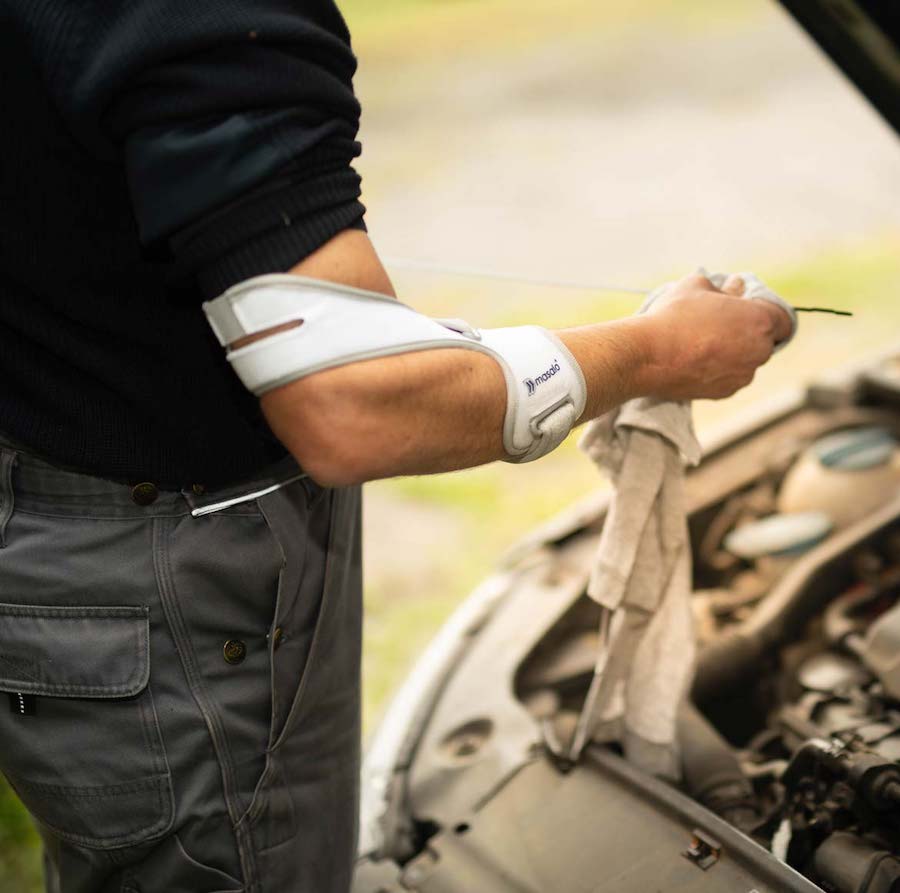
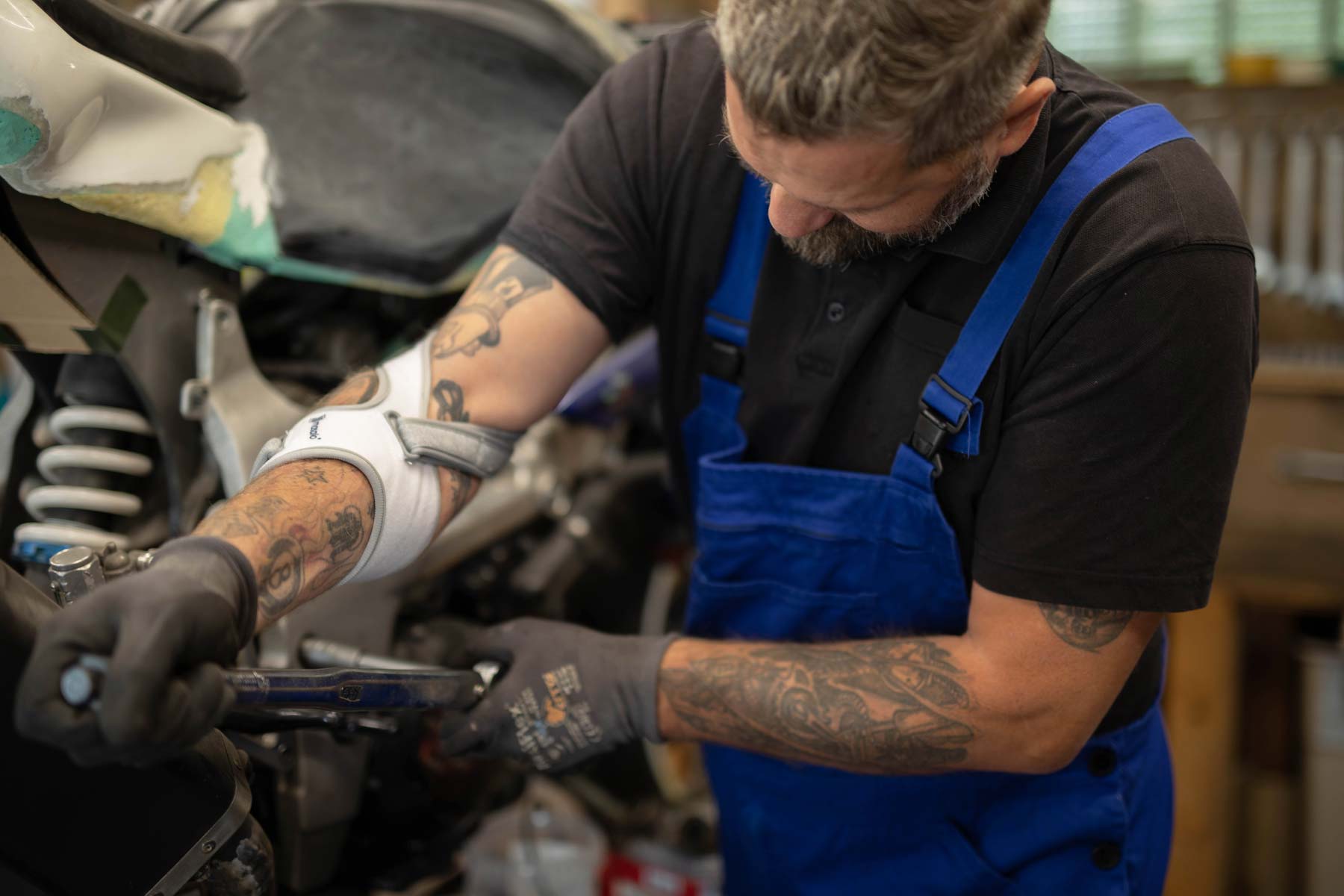
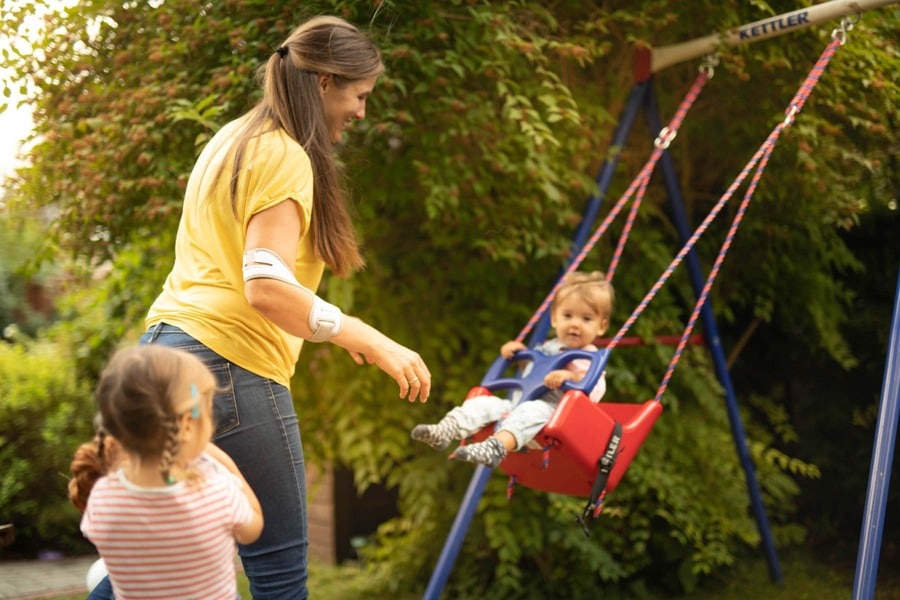
Drag the slider completely to the right to see the cause of the pain – drag the slider to the left to see how the Masalo Cuff MED works against the epicondylitis.
Cause of the epicondylitis
With every movement of the arm and fingers, tensile forces act on the tendon insertions of the forearm.
Repeated movements and overloading of the muscles cause tiny microtears, which can then become inflamed.
This is called tennis elbow, golfer’s elbow or mouse arm.
Tensile forces? Counter-traction!
The Masalo Cuff utilizes the unique counter-traction principle of action and provides immediate relief to the tendon insertions.
The negative tensile forces are reduced or stopped completely and cannot continue to act on the injured tendons.
The injury can heal, the arm can be fully used again.
Masalo Cuff at “Welt der Wunder TV”
The German science broadcasting channel “Welt der Wunder” (engl. “World full of miracles”) and a highly respected sports physician from Switzerland tested our Masalo Cuff against epicondylitis.
In this clip the unique mechanism of action is explained and the clinical picture of the tennis elbow and why our invention can help every sufferer is shown as well.
You can find more TV coverage and videos here:
Tennis elbow? Golfer’s elbow? What is that exactly?
Millions of people in Europe suffer from the epicondylitis.
But what exactly is the epicondylitis, better known as tennis elbow, golfer’s elbow or mouse arm and especially:
How to get rid of this treacherous injury?
With each movement of the arm, fingers or wrist, tensile forces from the forearm muscles and tendons act on the tendon insertions (epicondyli) at the elbow.
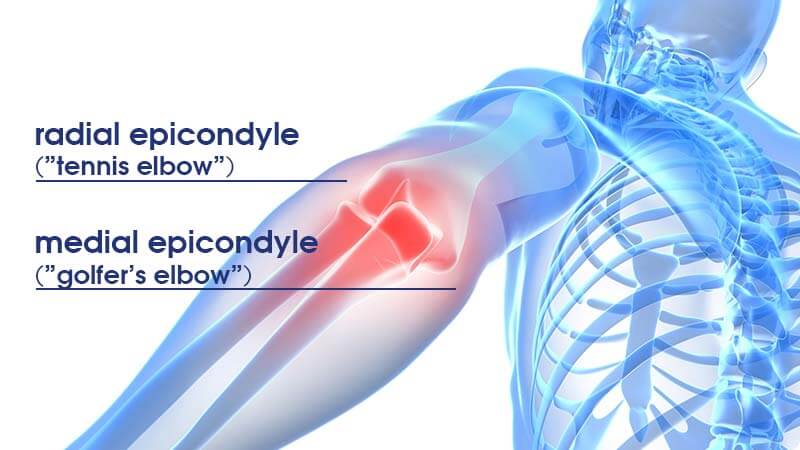
Unaccustomed high loads, strenuous or repeated movements of the arm can thus lead to injuries in the form of microtears at these tendon insertions, which can then become inflamed. The pain can occur at rest and also with exertion, and the quality of life of affected individuals is often severely limited.
More detailed information about the epicondylitis can be found on our information page.
This is exactly what the Masalo Cuff does.
The Masalo Cuff is washable and can therefore be worn in professions with high hygiene standards, as well as for swimming, water sports and much more.
Immediate relief
The injured tendon attachments can heal and the arm can continue to bear weight
Unique operating principle
Tensile forces are diverted to the upper arm strap
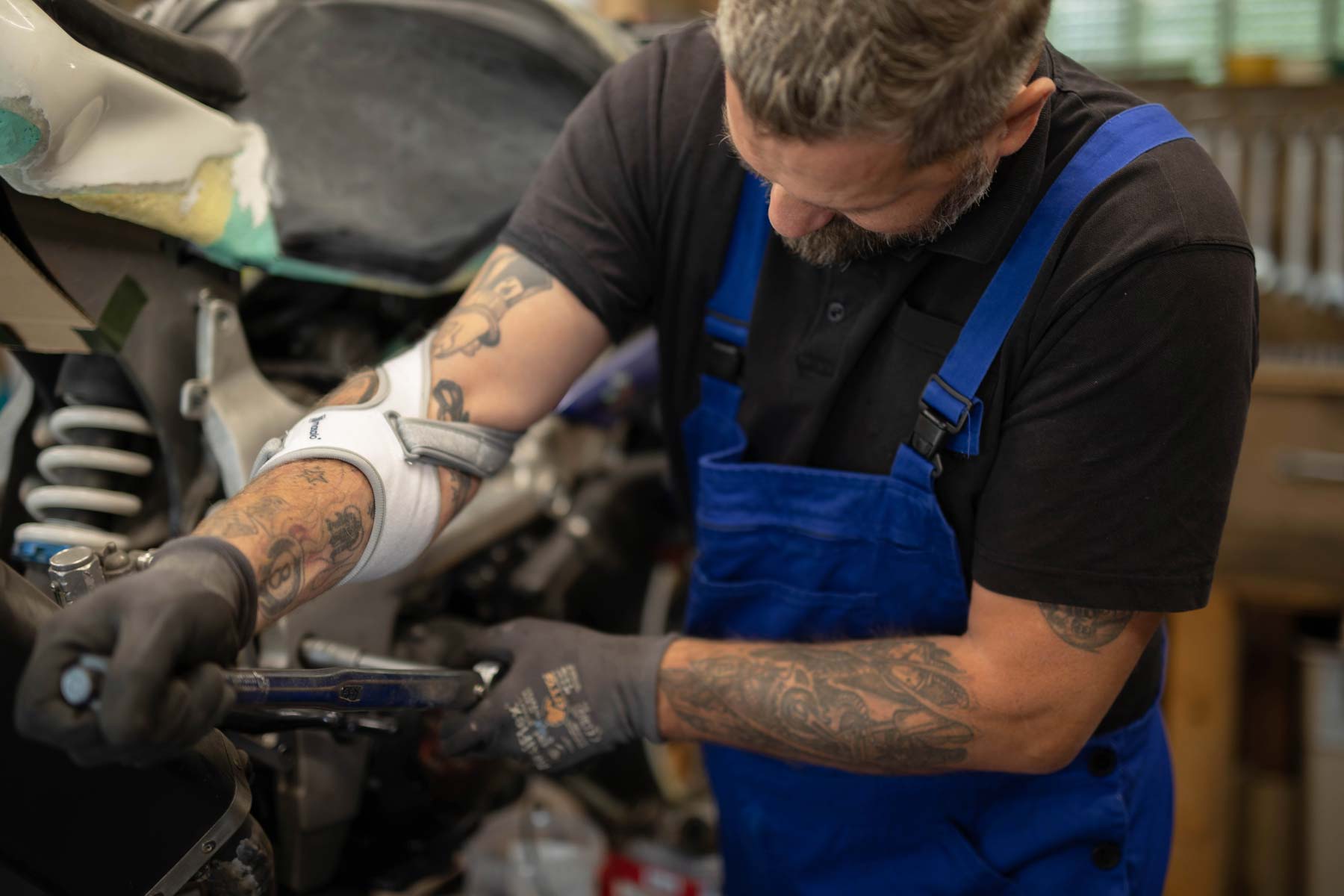
Just like the intensity of the pain, the trigger of epicondylitis is individual. Affected are active people such as craftsmen, office workers (PC work: Mouse arm), warehouse workers, retail workers, housewives, athletes, hobby gardeners, etc.
Knitting, gardening or shoveling snow etc. can also trigger this insidious disease.
The Masalo Cuff effectively and sustainably combats the cause of pain.
As the experiences of other sufferers show, it is even possible with the Masalo Cuff, despite epicondylitis/epicondylopathy, to return very quickly to pain-free sport.
Even weight training and fitness training is quickly possible again.
When playing tennis, experience has shown that the racket posture is improved. The stabilization of the elbow leads to a higher impact force and higher accuracy, also in golf. Thus, sufferers with the cuff have benefited in other sports such as javelin throwing, handball, volleyball, bodybuilding and so on.
Doctor’s opinion
“I haven’t had a single patient to date who didn’t respond well.”
Chief doctor Johannes Sailer, specialist in orthopedics and orthopedic surgery from Vienna, and his patients are enthusiastic about the Masalo Cuff – in this video he explains how it works from a medical and scientific point of view – free from marketing talk and empty clichés.
Tests & testimonials:
Browse hundreds of verified customer reviews or watch television reports, doctor tests and other videos related to our cuff.
ORDER NOW!
Order 100% safe and convenient in our online store!
Free shipping within Germany!
 Watch TV reports!
Watch TV reports! shop@masalo.eu
shop@masalo.eu +49 (0) 4131 - 727 15 97
+49 (0) 4131 - 727 15 97
